
I remember that it hurt.
I’ll never forget the first time that I heard a client tear apart my work.
I was 19 years old, had just begun freelancing and spent close to 100 hours designing her a Wix website. I poured my heart, soul and years of artistic training into that project, and the pain of hearing her tear it apart felt as if she stabbed a hole through the canvas of one of my paintings.
That moment was when I realized that art and advertising are very different.
In the world of startups, they must remain different.
In the years since, and prior to joining Boulder Bits, I built a 16-person creative agency and worked with over 70 clients, more than half in the startup space, and learned an enormous amount about the difference between art and advertising.
However, in building my network of creatives I learned that many struggles with the same problems when they enter the world of startups.
So, last week, I chatted with a dozen of the top creatives in the Colorado startup scene and leveraged the Colorado Creatives and Colorado Startupsgroups to gather advice for young, up-and-coming creatives.
Here is what they had to offer.
First of all, why is creative important for startups?
According to Sara Fruman, Director of Marketing and Community at Curable, “Creative becomes the face of your brand. Most people are way more visual than they are verbal.” Sara asks, “How do you want your brand to be viewed? How do you want people to see your brand? What emotions should they feel when they view you?” She mentioned that “If the way people view your brand matters to you, I’d invest in creative.”
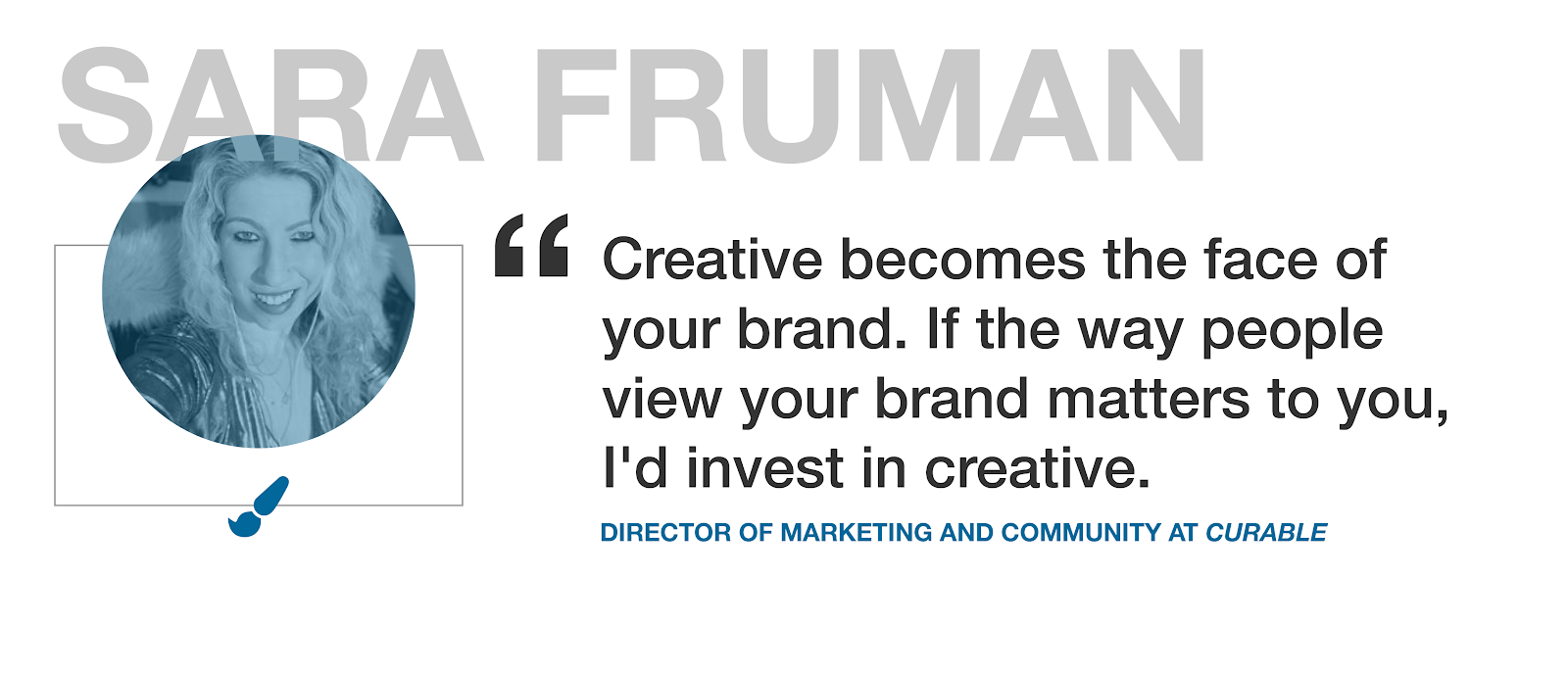
Separate from your work emotionally
This ties back to my realization that art and advertising need to remain separate. It’s difficult but crucial.
David Bach, Creative Lead at NetApp, believes that “Data is greater than opinion. Don’t fall in love with your designs or ideas. Take a step back, emotionally, and be open to making revisions when the analytics don’t back up your original concepts.”
Max Lenderman, Founder/CEO/Chief Creative Officer at School, chimed in on this topic as well. “As a creative, get used to and accept happily the idea of rejection. This is part of the job. Although a lot of hot creatives used to get their ideas “bought” by clients, the start-up world is different and will come with a lot of outright negativity to ideas and approaches. This is not a sign of a bad idea, just perhaps a sign of a bad pitch. Work on the pitch and use all the “no’s” to focus on the creativity of the pitch process as much as the creativity of the idea itself.”
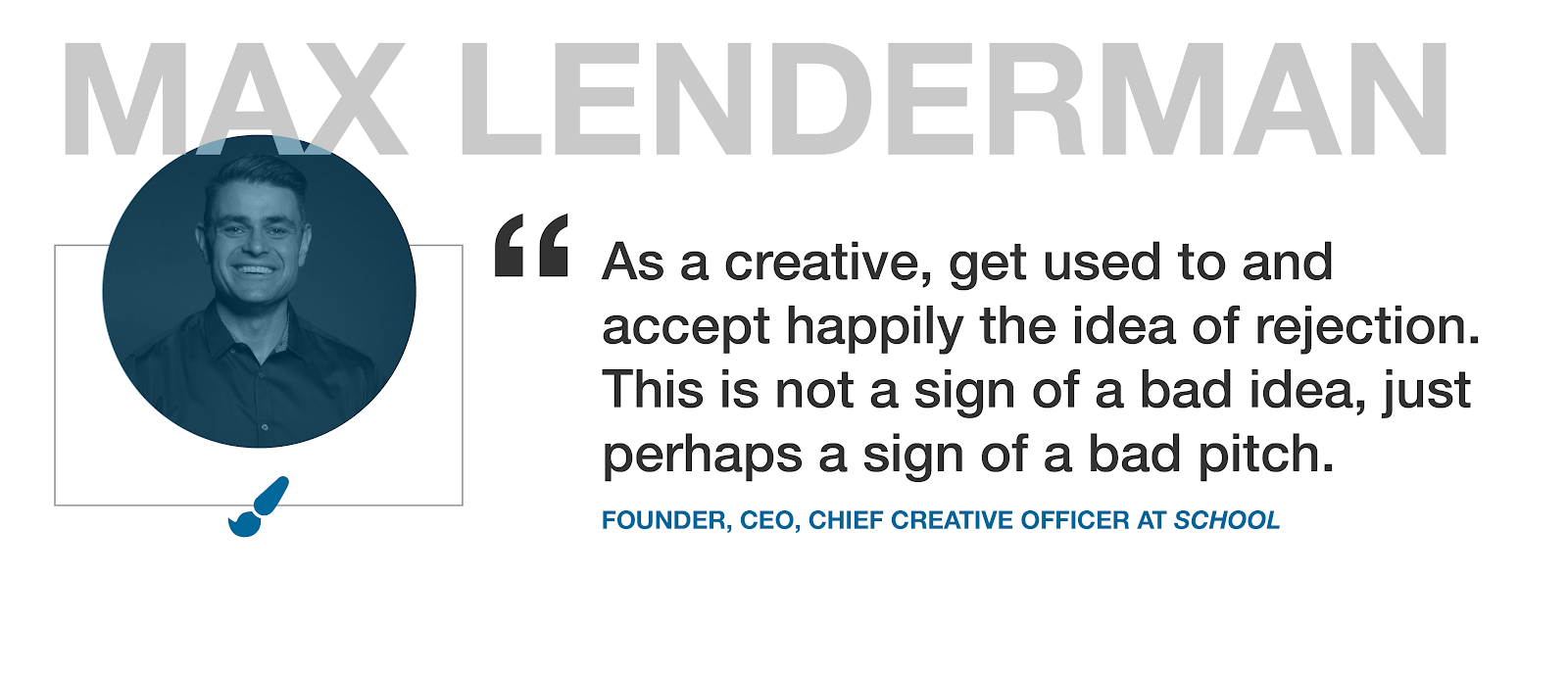
Learn to be agile
I often recall one of the first clients that I worked closely with. I joined their weekly traction meetings while my team and I helped them rebuild their website. The speed in which they worked and iterated was a lot to digest, and being able to hit weekly deadlines was a completely new way for us to operate.
Many creatives struggle to align with Lean and Agile processes that are baked into startup culture.
David Bach urges up-and-coming creatives to learn to live with the Agile process. His recommendation is, “Find ways to make it work for you. The Agile process sucks for creatives, but unfortunately, it’s a reality in the tech/startup world. Most software development companies use Scrums and Sprints as a way to stay on top of the seemingly endless list of updates and pivots. Get used to it.”
At my agency, learning early on how to adapt our creative process to align with startup culture was a fantastic opportunity for my team and I. This drastically set us apart in our ability to perform positively with startups.
Explain the why and demonstrate ROI
Kyle Shannon, Founder, and CEO at Storyvine, urges, “Once you’ve done work, be able to answer the question “why” you did things the way you did if someone asks – other than ‘because I think it’s awesome’. Tell them how your work solves the problem it’s intended to.”
Far too many creatives present their work and their portfolio but leave this portion absent.
David Bach chose to chime in on this topic as well. He believes that “It’s much easier to “sell” your visual concepts when you can explain the reasons behind what you’re designing. Design without intent is not design, it’s decoration. Startups don’t need decorators, they need designers. It’ll be easier for you to earn the trust of your team and your customers if you come to the table with well thought out and easily understandable ideas.”
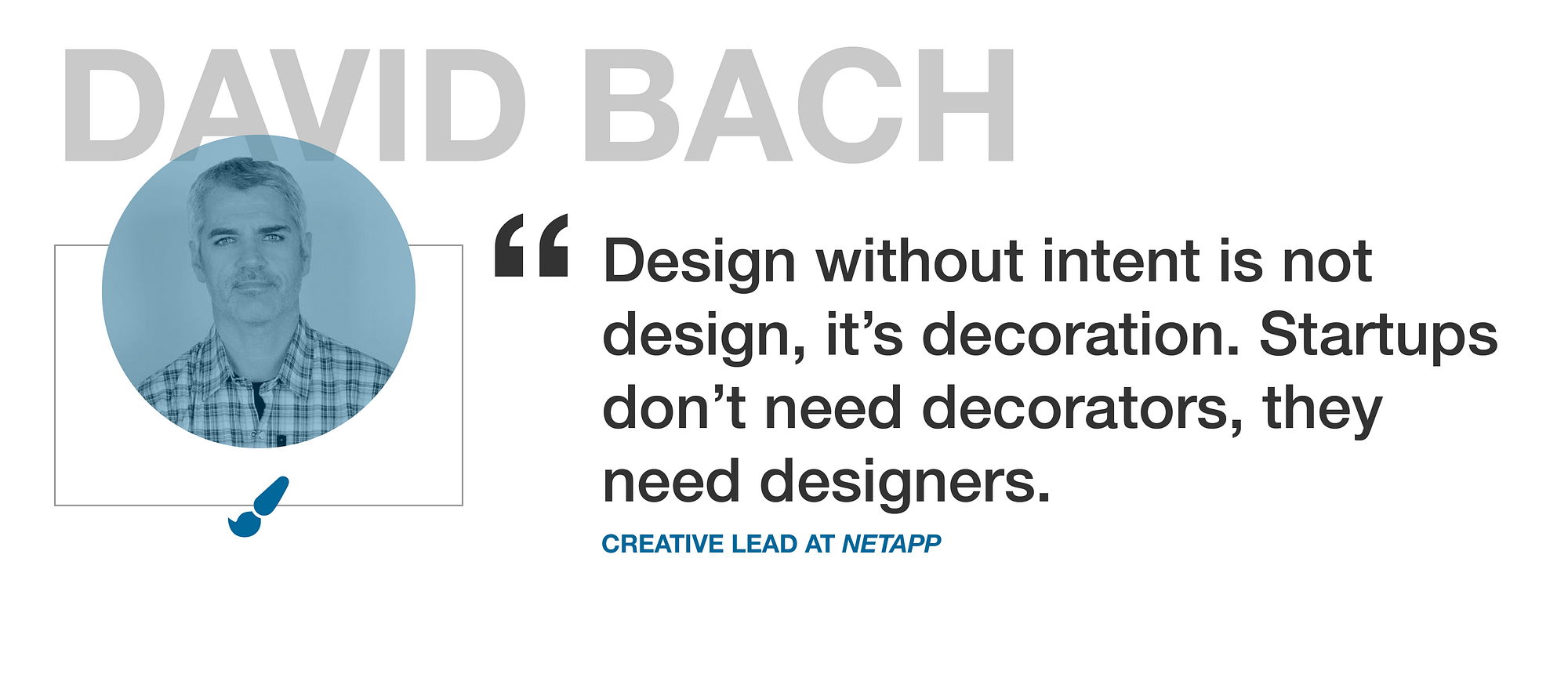
Sara Fruman also shared that, “The best way to prove your ROI is to start tracking the numbers. For instance, does this email generate more conversions when it is well-designed? Did this video ad lead to more brand awareness and views because it was done in a mindful, professional way?”
Being able to prove that your creative moved the company forward in a way that is measurable will drastically set you apart in your career.
Work efficiently, quickly, and at scale
Tiffiny Costello, Marketing Director at TEDxMileHigh, addresses her peers by saying that, “Done is better than perfect! There are so many things I just didn’t do because I thought I had to wait to have the right camera, etc.”
This is a crucial mindset that creatives need to adopt.
Kyle Shannon chimed in again to add that creatives should, “Learn to work fast. In school, or on your own, things can be perfect. In business (startup or not) there is a schedule, very often outside your control. If you become a creative who delivers your work BEFORE it’s due, you’ll never be short of work.”
At Boulder Bits, we often talk about form vs. function. Many creatives prefer form, while other operators prefer function. A balance of the two is the sweet spot.
That said, move quickly, crank out work, test everything, and constantly continue to iterate based off of your results and data. And remember, if you’re not embarrassed by your early work, you launched it too late.
John Weiss, CEO and Co-Founder at Human Design, says, “Don’t be romantic about your creations or assume that you will get to one magical solution. Quality often comes out of quantity; don’t be afraid to produce multiple versions of work or put in extra hours. Don’t let your principles of design, efficiency, or effectiveness kill your pursuit of finding or nurturing the best idea.”
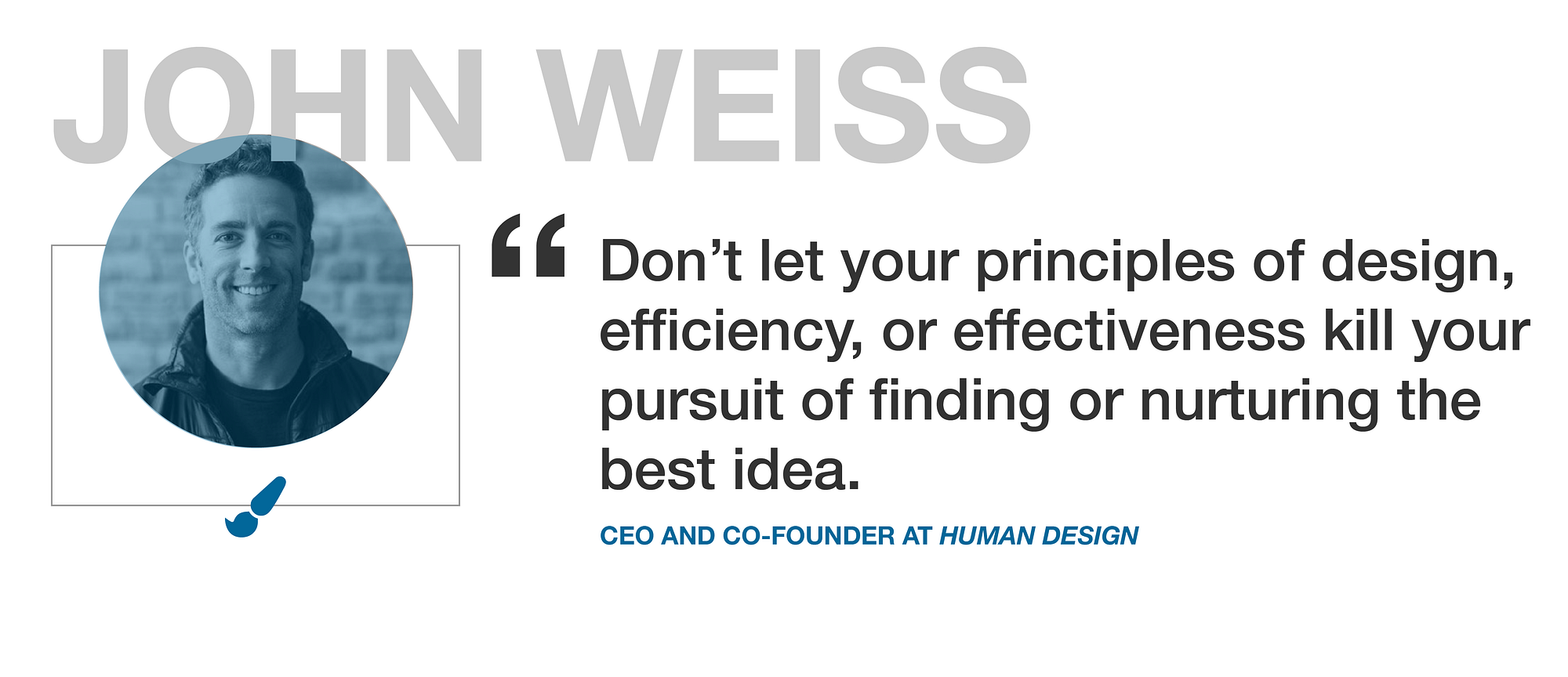
Show passion through your work and presentation
Lizelle van Vuuren, Founder/CEO/President at Women Who Startup, believes that, “It’s remarkably accessible to create a fresh piece of content for a new client or company you want to work with today. There’s no better approach than to create something and presenting it to the company/startup/organization to get their attention. With Women Who Startup, everyone I’ve ever hired was through seeing their work. Let your work and passion for the company be seen. Stop telling, start showing. Startups need an edge in content development, so give them their edge and they’ll find a way to pay you.”

Engage in the community
Jordan Rothenberg, Regional Manager at Techstars, always recommends that creatives attend a Startup Weekend. “It’s a low cost, low-risk program for putting their creative talents to work in a startup environment. It’s also a great program to start building a portfolio of creativity + tech. Designers are especially in high demand at the event.”
I attended my first Startup Weekend last year. I was hesitant to stay the whole weekend because I was one of the only designers at the event. As it turned out, I was able to provide a massive amount of value to my team. I whipped up a beautiful pitch deck, product mock-ups, and a landing page. We received 2nd place and I walked away with dozens of new people to add to my network.
David Bach recommends making friends at all of the organizations that you work with. He urges creatives to, “Work with as many different groups within the company as they can and show them how valuable good ideas and good design can be. It’s the best way for them to learn about the product and become an indispensable member of the team.”
Graham Furlong, President/Partner/Chief Strategy Officer at Made, recommends that creatives, “Bet on other people and find their crew. People build businesses, so it’s crucial to find the ones that make you feel good each and every day.”
Enjoy the process
“The journey is the reward.”
Cheesy, but critical. Enjoying the process directly leads to better work. No questions asked.
Robert Haverly urges creatives to “Believe in the product they’re building, not to take things more seriously than they need to be taken and to use the ‘unlimited vacation days.’ The rest and reset is important — especially in a startup environment.”
Dan Holloran, Content Marketing Specialist at Splunk, shared that he’d “want to tell his younger self to find what he loves to do, then monetize it. Don’t focus so much on the paycheck. Focus on the day-to-day and make it something you want to do.”
Graham Furlong chimed in again to urge creatives to always bet on themselves. “If you’re young or new, it’s often too easy to fall into the trap of changing your beliefs or behaviors to “fit” into the culture of your startup community. While that might give you the feeling of acceptance, over time you will miss the creative energy that came from pursuing your own radical ideas, so find the balance. Fit in without losing your soul”.
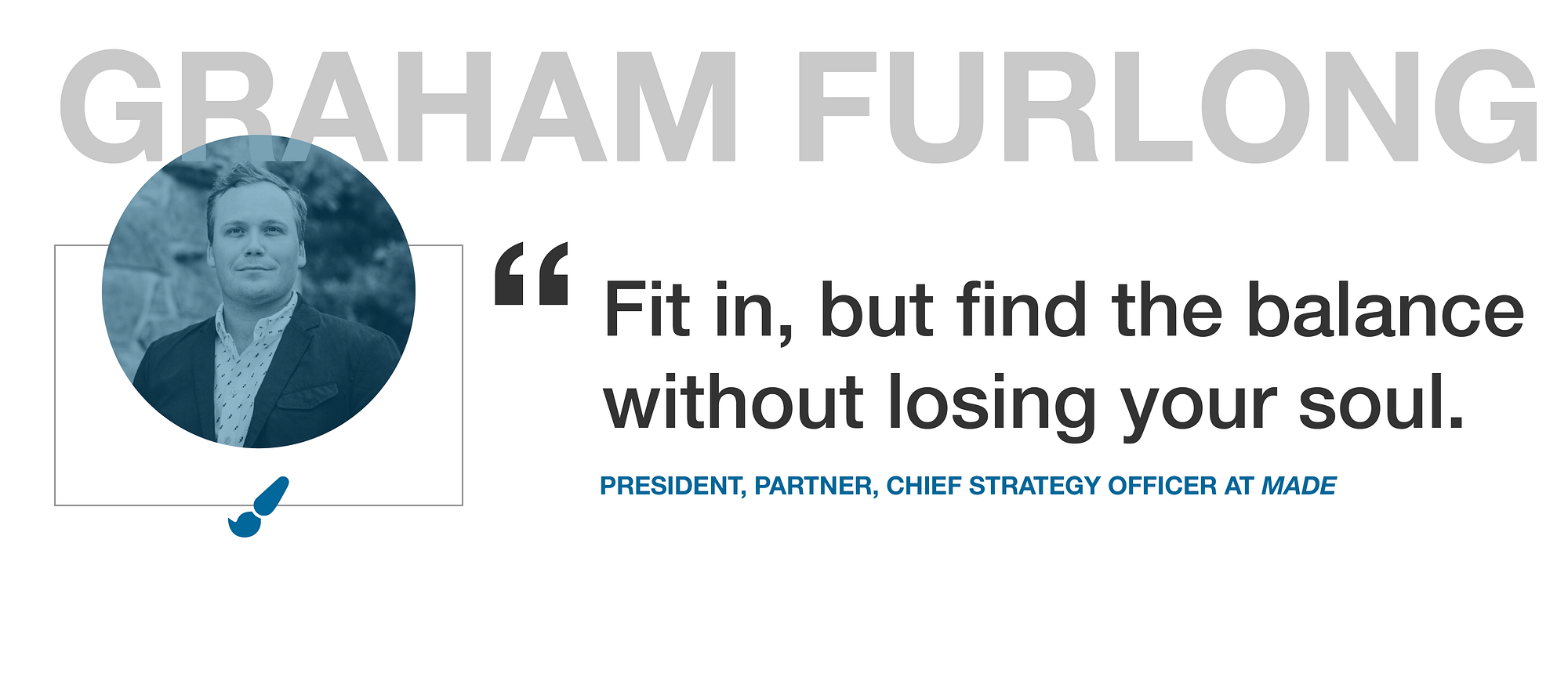
With thousands of creatives transitioning into the startup space every year, it is crucial to sharpen your competitive edge. The speed at which you work, your ability to separate from your work emotionally, your passion, and your ability to demonstrate ROI will leave you miles ahead of the competition. But most importantly, enjoy the process.
Interested in getting more involved in the Creative and Tech communities in Colorado? Join Colorado Creatives and Colorado Startups.
Jake Hurwitz is the VP of Branding at Boulder Bits. Full-stack creative by day and adventurer by night, Jake is always interested in connecting with like-minded people. Find him on LinkedIn.












